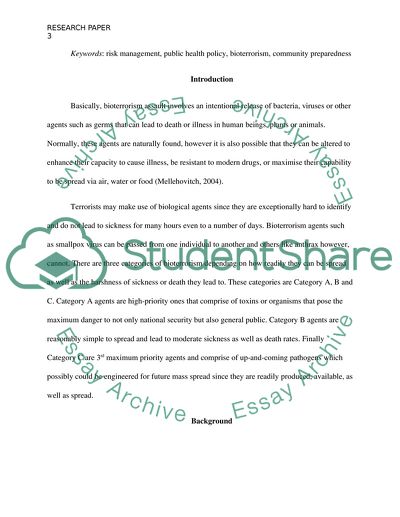Cite this document
(Bioterrorism Attack To The US Research Paper Example | Topics and Well Written Essays - 2250 words, n.d.)
Bioterrorism Attack To The US Research Paper Example | Topics and Well Written Essays - 2250 words. Retrieved from https://studentshare.org/technology/1852650-bioterrorism-attack-to-the-us
Bioterrorism Attack To The US Research Paper Example | Topics and Well Written Essays - 2250 words. Retrieved from https://studentshare.org/technology/1852650-bioterrorism-attack-to-the-us
(Bioterrorism Attack To The US Research Paper Example | Topics and Well Written Essays - 2250 Words)
Bioterrorism Attack To The US Research Paper Example | Topics and Well Written Essays - 2250 Words. https://studentshare.org/technology/1852650-bioterrorism-attack-to-the-us.
Bioterrorism Attack To The US Research Paper Example | Topics and Well Written Essays - 2250 Words. https://studentshare.org/technology/1852650-bioterrorism-attack-to-the-us.
“Bioterrorism Attack To The US Research Paper Example | Topics and Well Written Essays - 2250 Words”, n.d. https://studentshare.org/technology/1852650-bioterrorism-attack-to-the-us.


